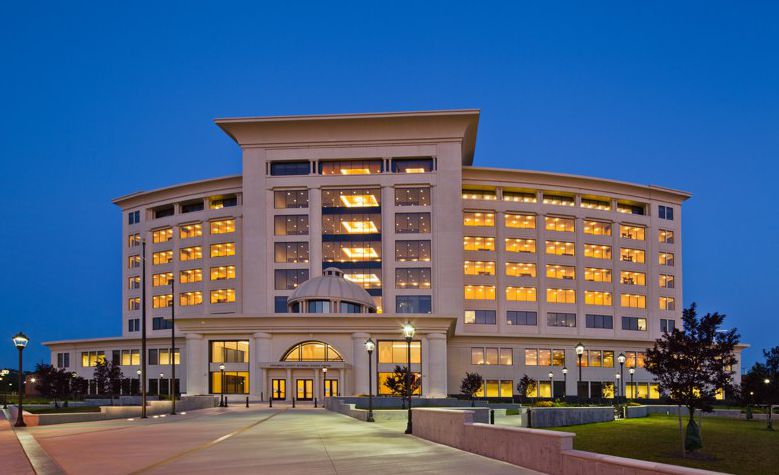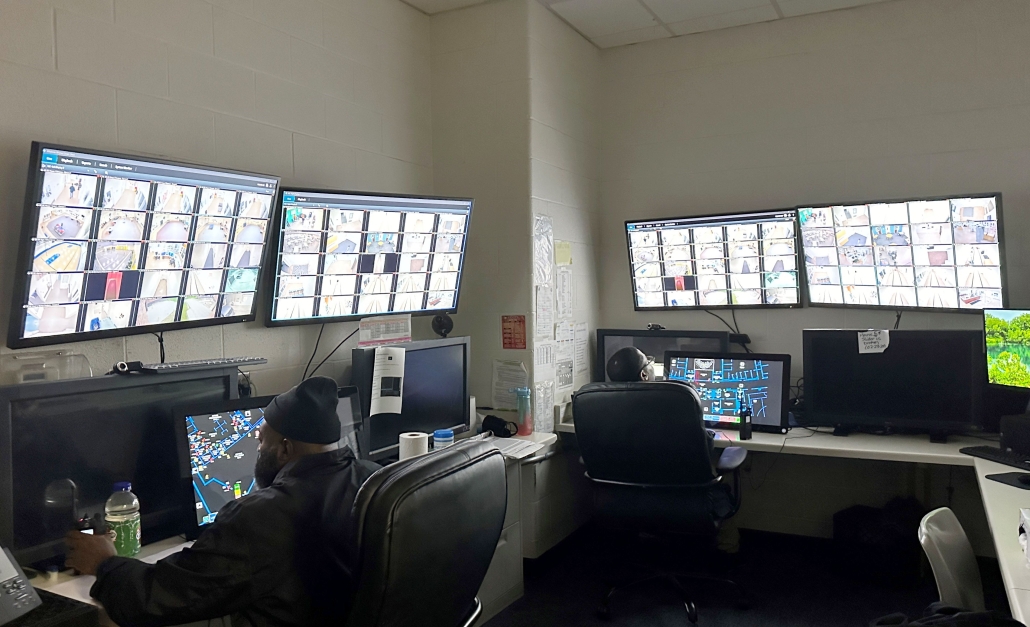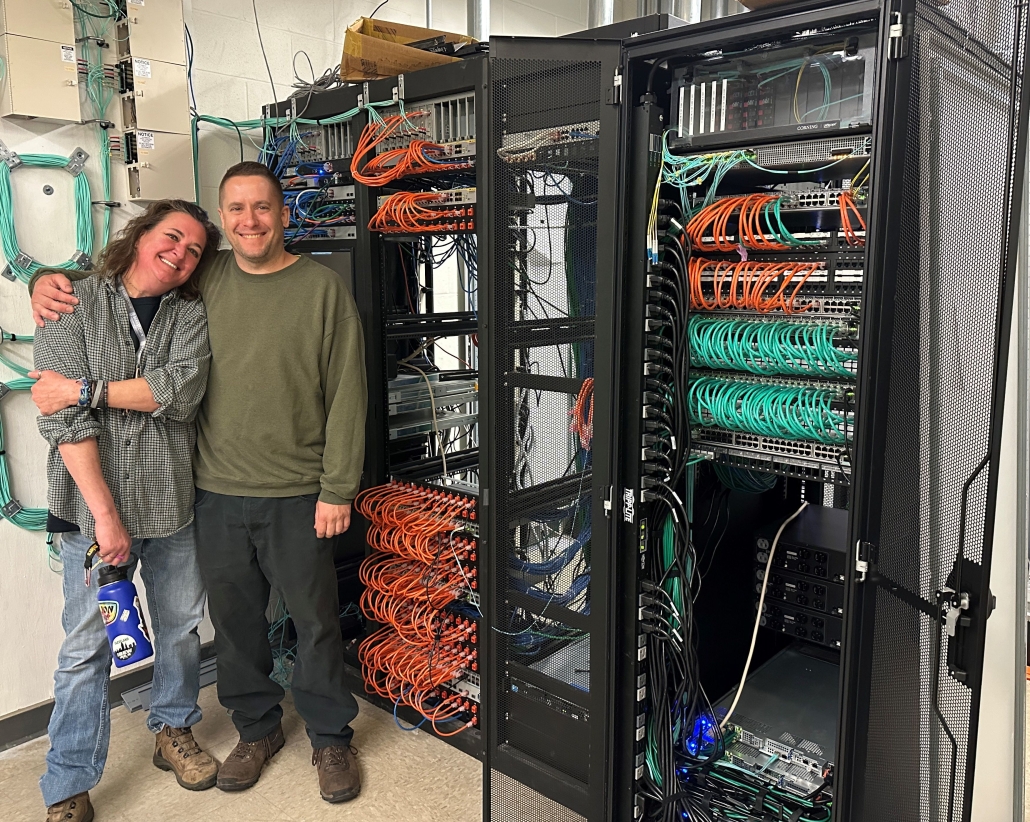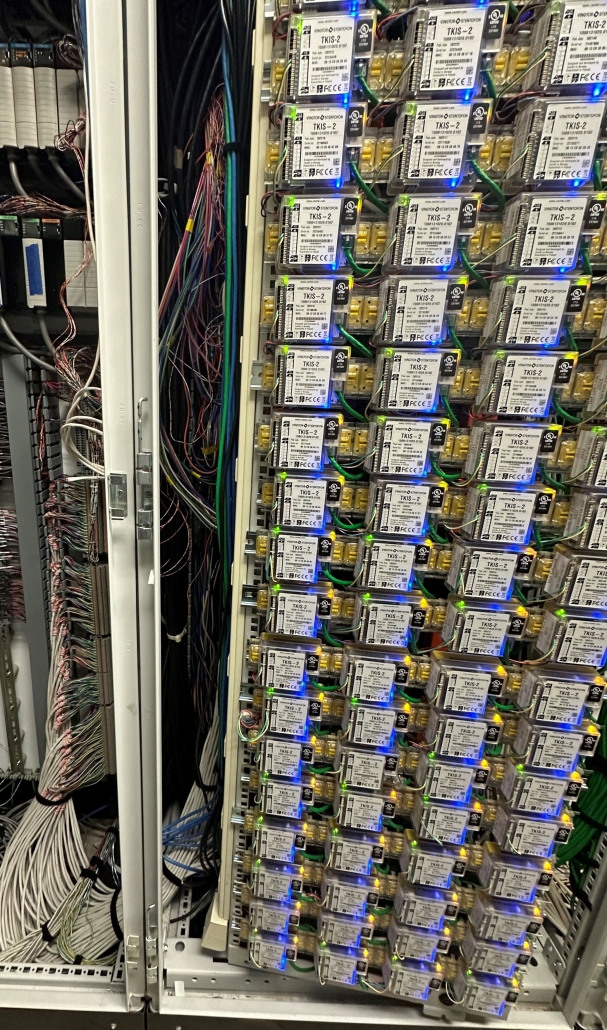Enhancing Safety & Security at the Cuyahoga County Juvenile Justice Center
A need for advanced security measures prompts a significant technology and electrical upgrade project.
A need for advanced security measures prompts a significant technology and electrical upgrade project.




The security upgrades at the Cuyahoga County Juvenile Detention Center represent a significant achievement in enhancing the safety, security and communications inside a vital community institution.
As the installation subcontractor for Integrated Precision Systems of Valley View, Ohio (a long-time security systems design contractor for Cuyahoga County), Harrington Electric Co. helped transform the security infrastructure of the Juvenile Justice Center, addressing several critical challenges along the way.
The installation portion of the project was led by Harrington Electric Co. foreman Allisen McCreary, security technician Chris Bay, and project manager John Costella.
The primary objective of the project was to enhance the safety and security of the CCJJC by updating a technically outdated surveillance system. This included installing new CCTV cameras both inside and outside the facility, replacing obsolete equipment, and extending surveillance capabilities to ensure comprehensive facility coverage.
The project also involved extensive improvements to the facility’s intercom system which included installing individual intercom units inside each inmate housing unit (or cell).
Unique Challenges Posed by the Work Environment
Working within an active detention facility presented numerous challenges for the Harrington Electric crew. The facility houses juveniles involved in violent crimes, necessitating careful planning and coordination to ensure the safety of both the workers and the inmates. One of the most significant challenges was working within the housing units, which at times were occupied. The work-around involved temporarily relocating inmates to areas like the gymnasium or on-location classrooms, which required meticulous scheduling and communication to avoid disruptions.
Another layer of complexity was added by the physical structure of the building itself. As a typical jail without drop ceilings, routing low voltage cables into the cells required innovative solutions. The team often had to find pathways through existing infrastructure, such as popping out light fixtures and coring holes.
“Our foreman, Allisen McCreary, played a crucial role in navigating day-to-day obstacles,” noted John Costella. “Her expertise and leadership was instrumental in maintaining progress despite the somewhat adverse conditions inside the facility and, at times, among the inmates. And her ability to work closely with the facility’s administrative staff ensured that communication remained open, which prevented uncoordinated circumstances that could have derailed the project or put workers at risk.”
The project was executed over a span of nearly two years, with a dedicated two-person crew handling the bulk of the work. The installation of new cameras and the integration of updated technology provided the CCJJC with enhanced surveillance capabilities. The facility now boasts a robust security system that offers better coverage and more advanced monitoring features, significantly improving safety for both inmates and staff.
“What has made this challenging project so successful is a crew that sees the importance of flexibility and adaptability in the face of unexpected challenges, and a 20-year working relationship with an outstanding design contractor in IPS,” Costella emphasized. “Working in a live, dynamic environment like a juvenile detention center requires a team that can quickly adjust to changing circumstances. Plus effective communication and coordination with facility staff was critical and ensured that all parties were informed and synchronized, helping to mitigate risks and avoid unnecessary delays.”

 The Transformation of the Chapel at the Center for Pastoral Leadership
The Transformation of the Chapel at the Center for Pastoral Leadership 